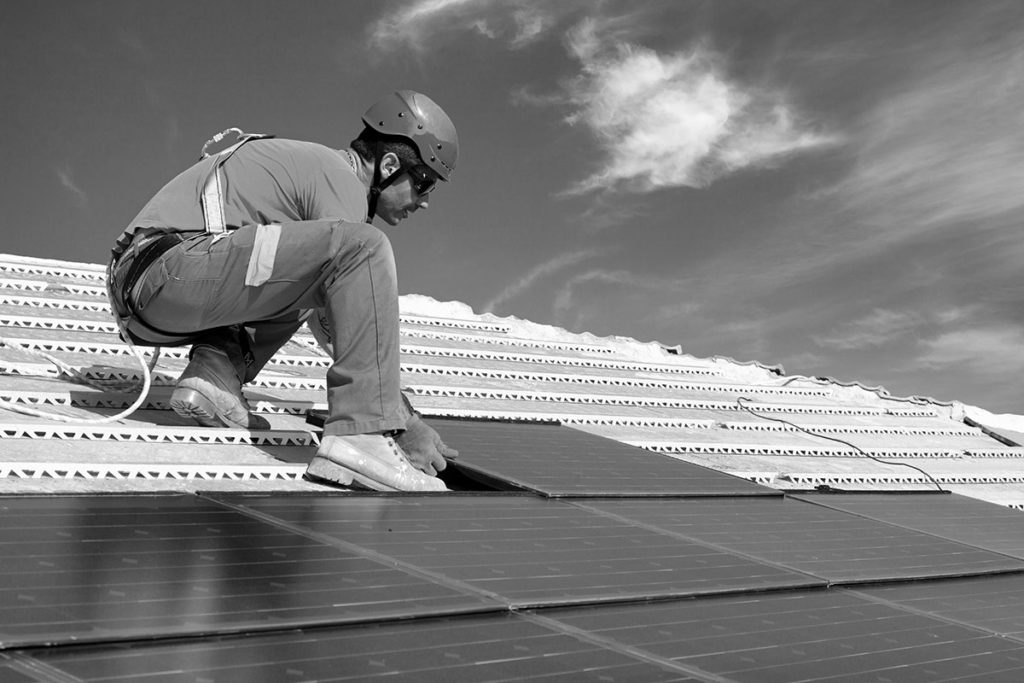The Difference Between Active and Passive Fall Safety
According to The Centre for Construction Research and Training, employees falling accounts for the greatest number of fatal construction injuries. This finding agrees with the OSHA statistic: providing adequate fall protection is the most often ignored OSHA regulation.
The Fall Safety Hierarchy
The best practices of all workplaces involving altitude include the implementation of an extensive fall hazard protection system. In the fall safety hierarchy, precedence is given to the elimination of hazard itself over all other methods. If not possible, next in line is securing the site parameters by the installation of a Passive Fall Protection System, and then – as the last option – an Active Fall Arrest System.
Where Is Fall Safety Required?
As prescribed by Occupational Safety and Health Administration (OSHA), all workplaces involving elevation or altitude must execute a fall safety program. There are varying height limits for different types of workplaces – if the aforementioned height limits are reached or exceeded, employers must apply precautionary measures. The height limits are as follows:
- Four feet for industrial workspaces
- Five feet for shipyards
- Six feet for construction sites
- Eight feet for long-shoring
OSHA requires all workplaces operating dangerous equipment or machinery to set up precautionary measures, no matter how little the elevation.
The goal is worker’s safety: anything that is potentially dangerous must be protected against.
To better implement fall safety measures, we need to first understand the differences between the fall safety systems.
Passive Fall Protection System vs. Active Fall Arrest Systems
A passive fall protection system encompasses all protective measures that are in essence static, fixed, or unmoving. There is no human interaction with the system involved after installation and there is no need of personal protective gearing. As stated above, these are installed as the second line of defense against fall. Commonly administered passive protection systems include barricades, guardrails, netting, and so on.
Active fall protection systems on the other hand involve active participation of the worker, are movable, and require the use of special gearing. These systems comprise of a body harness, lanyard, an anchor, lifeline, and connectors such as snap hooks. There are multiple variations of a fall arrest and restraint system available, but all have these parts in common.
There are a few things that are a prerequisite and must be taken care of if active fall protection is intended.
The first and foremost is training. Untrained or unauthorized persons must not use active fall safety. Before every use, it is recommended to go through a simple and easy to execute rescue plan in the event of a fall. Workers must thoroughly check each and every equipment and its parts regularly to ensure fall protection is secure and in place.
Inappropriately used active fall protection can be not only ineffective, but dangerous. Make sure the right equipment is installed. For example, use anchorage as rated for the number of users.
Active fall safety systems comprise of different types of equipment. For example, there are self-retracting life lines and shock absorbing lifelines available – you can select the appropriate one according to the total fall distance available at the site. This distance can be calculated by adding the following lengths: free fall distance + distance harness stretches + height of the worker + elongation distance of the arresting device + buffer distance.
Garlock Safety Systems is a renowned and trusted name in fall protection equipment. Our clients trust us with the lives of their workers – we take this responsibility very seriously. We can proudly state our products meet OSHA requirements.
Our company offers a variety of specialized equipment for both active and passive fall protection. Our products are customizable, corrosion resistant, and top quality. To get a quote from us or for more information on our products, please visit our site.
